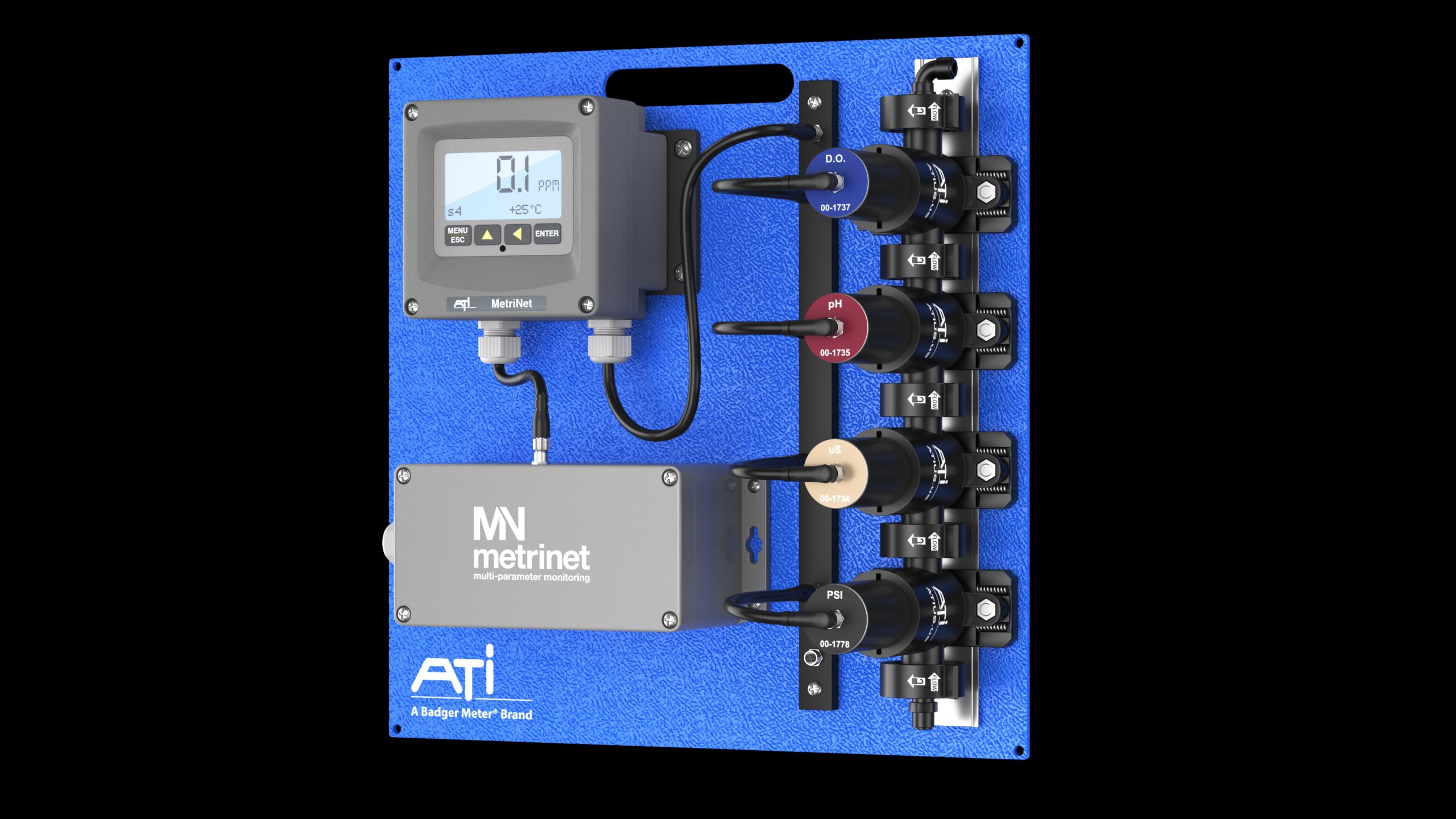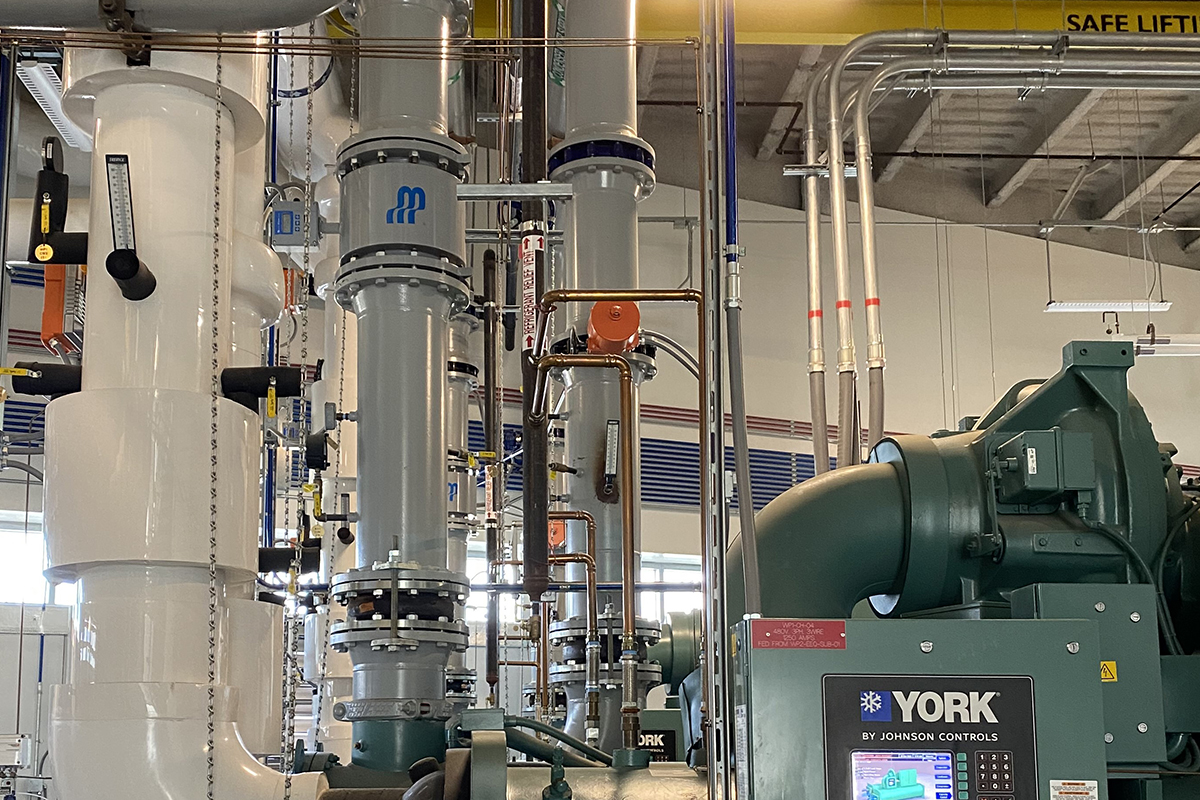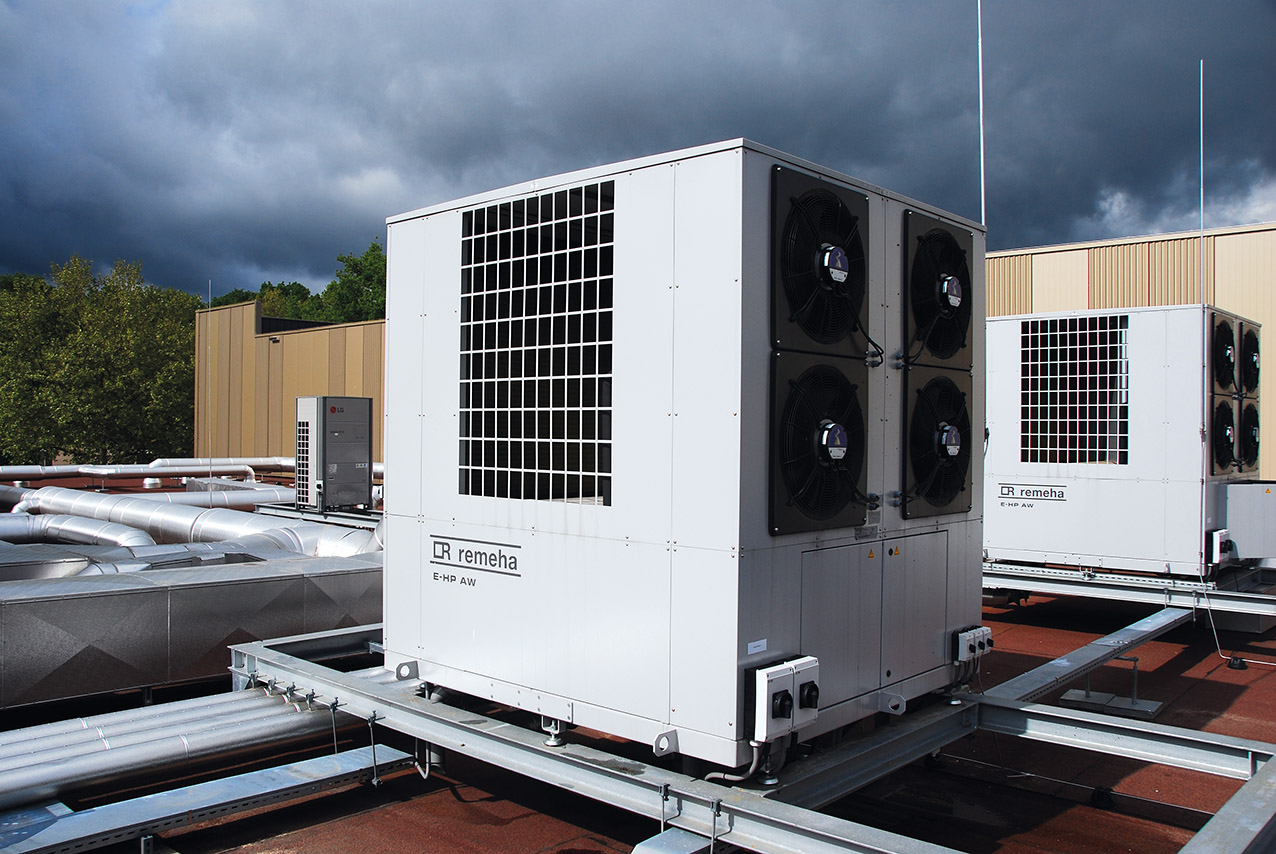
The UK is ramping up its activities to shift towards cleaner ways of heating the country’s built environment, and heat pumps are the technology of choice for this transition. Against the backdrop of a long-term energy price crisis, however, the move to all-electric buildings is far from straightforward.
Robust standards and guidance to support the industry are needed if the UK is to deliver high-quality heat pump installations, but there is a lack of up-to-date technical information that addresses heat pumps in larger buildings specifically.
So, after the success of CIBSE’s 2021 guidance AM16 Heat pump installations for multi-unit residential buildings, the Department for Business, Energy and Industrial Strategy has commissioned the Institution to produce guidance on heat pumps for large buildings. CIBSE is working with a team from Arup and a cross-industry steering group to author AM17: Heat pumps for large non-domestic buildings.
IMPACTS OF HEAT PUMPS
- The building electrical supply: the installation of heat pumps may require a new electrical connection to the building. In addition to the kVA capacity required, the district network operator may require information on the starting method of the heat pumps – for example, direct-on-line, soft-start – as this can impact the electrical infrastructure
- Plantroom ventilation: due consideration must be given to the toxicity, flammability and risk of asphyxiation presented by refrigerants in enclosed spaces. Further guidance is provided in BS EN 378
- Noise from air source heat pumps and outdoor units can be greatest during a ‘blowdown’ operation, when fans run at maximum speed to dry the evaporator after a defrost cycle
- Air source heat pumps and outdoor units can produce both meltwater and pluming during and after defrosting cycles. These should be considered carefully when locating such units, as run-off water is likely to refreeze, presenting a slip hazard
Since the release of the Heat and Buildings Strategy1, and the target of installing 600,000 heat pumps every year by 2028, the UK government has been developing policies to drive forward the delivery of heat decarbonisation and support businesses to prepare for a clean-heat transformation through the 2020s and into the 2030s.
The UK government has consulted on proposals to phase out the installation of new fossil fuel heating systems2 – those fuelled by oil, liquefied petroleum gas, or coal – in existing businesses and public buildings that are off the gas grid. The government will be publishing a response to this consultation in due course.
The effect of defrost cycles on the operation of an air source heat pump and the noise it can generate, and the impact this can have on the building it serves, should be considered carefully
Configuring systems
AM17: Heat pumps for large non-domestic buildings provides an overview of the different heat pump technologies currently available on the market, including air and water source heat pumps. It also highlights the advantages of different ground source heat pump (GSHP) collectors – open-loop, vertical and horizontal arrays – and the importance of getting specialist advice.
Selecting a suitable and future-proofed refrigerant is key to the long-term success of new heat pump systems. The trade-offs between performance and environmental impact of different refrigerants are discussed, including a dedicated section on CO2 heat pumps.
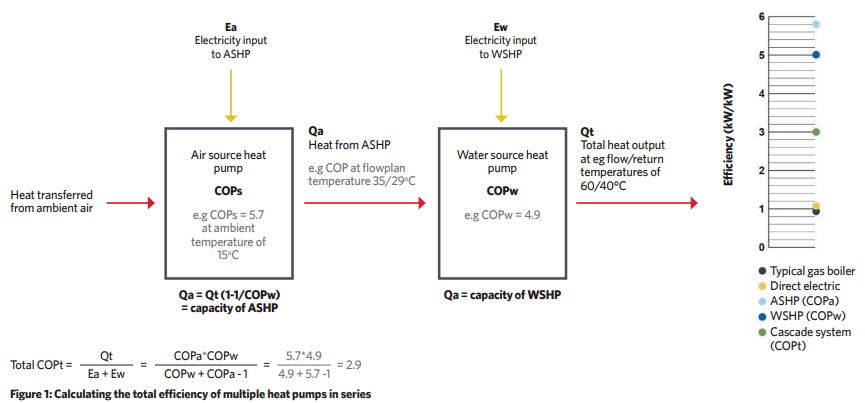
The capability of a heat pump to provide high-temperature process heat, or simultaneous heating and cooling, should be a response to the requirements of the building. One configuration is to use heat pumps in series or ‘cascade’ to achieve higher temperatures. AM17 provides information on how such systems might be configured and how the total system efficiency should be calculated (see Figure 1).
Derisking GSHPs
Ground source heat pumps can offer the opportunity for higher year-round efficiencies compared with their air source counterparts. Two crucial risk areas that can drive capital costs are managing geological uncertainty and obtaining environmental permits for open-loop ground source and water source applications.
Selecting a suitable and future-proofed refrigerant is key to the long-term success of new heat pump systems
AM17 supplies guidance on the role of ground investigations and thermal response tests (TRT) in designing such a system. For closed-loop vertical arrays, a trial borehole can provide valuable insight into local drilling conditions – data that can be used to reduce a drilling contractor’s geological uncertainty. A TRT can then determine ground temperatures and conductivity, which allows a specialist designer to refine calculations on the number and depth of boreholes required.
The forthcoming guide also contains information from the Environment Agency (EA) on the permitting process for open-loop systems in England, plus tips on how to achieve an environmentally successful heat pump scheme.
Open-loop ground source and water source installations may require groundwater investigation consent, an abstraction licence, a discharge permit, and a flood risk permit – all of which require engagement with the relevant regulator (such as the EA for installations in England).
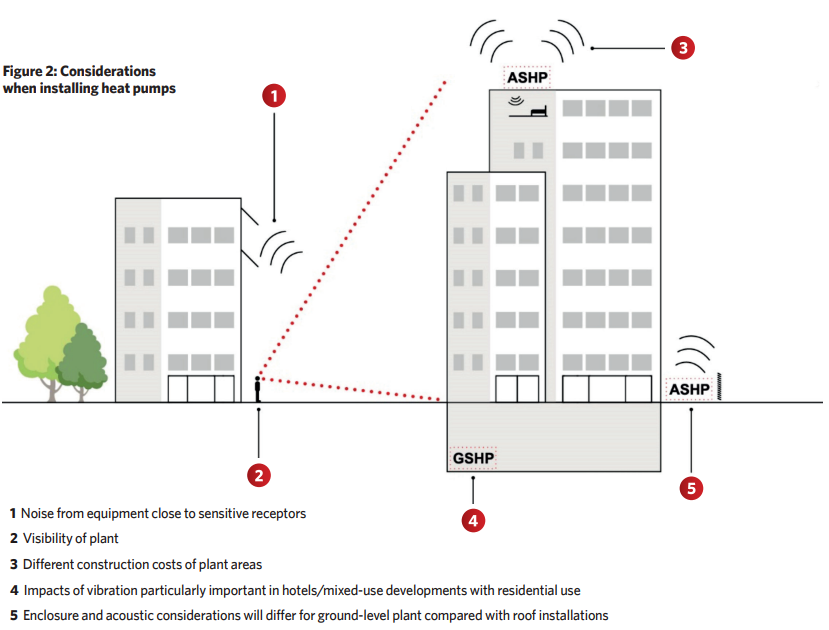
Understanding air source heat pumps
Air source heat pumps (ASHPs) will be the most common units installed during the heat pump transition. While there is broad understanding across the industry of the effect of outdoor air temperature on the efficiency and capacity of such units, the effect of defrost cycles on the operation of a heat pump and the noise it can generate should all be considered carefully.
AM17 provides information on how we can use controls and thermal storage to mitigate these issues, including an example calculation of how to size a thermal store to offset the impact of a defrost cycle.
Another aspect of ASHPs covered in AM17 is the distinction between gross and integrated capacity. Manufacturers can provide both the gross capacity of a unit and the integrated capacity, which includes an allowance for defrost cycles.
The test regime for determining the integrated capacity of a heat pump is set out in EN 14511‑3:2018. Selecting a unit based on an integrated capacity means that the system has extra capacity for the unit to supply additional heating to recharge the system after a defrost cycle.
LEARNING FROM PAST INSTALLATIONS
AM17 contains several case studies of existing air and ground source heat pump installations, which offer real-world insights into specific elements of designing and operating large heat pump systems. These include:
- Using annual building-load analysis to optimise your heat pump sizing
- System monitoring
- Sizing a cascade heat pump system
- Temperature stability using thermal stores
- Minimum turndown of heat pumps
Simultaneous and independent heat pumps (SIHPs) represent some of the most sophisticated units available on the market. These can generate chilled water and low-temperature hot water separately or at the same time. SIHPs are suited to applications with balanced and simultaneous heating and cooling loads.
These units are, however, more costly than alternatives such as reversible heat pumps or heat recovery chillers. Many projects undertake an annual demand simulation to determine the true simultaneous heating and cooling load, and use this information to balance the quantity of SIHPs with other sources of heating and cooling.
The integration or retrofit of heat pumps into our new and existing buildings has the potential to impact most aspects of the design, from MEP systems, space allowances, façade design and plant-replacement strategy.
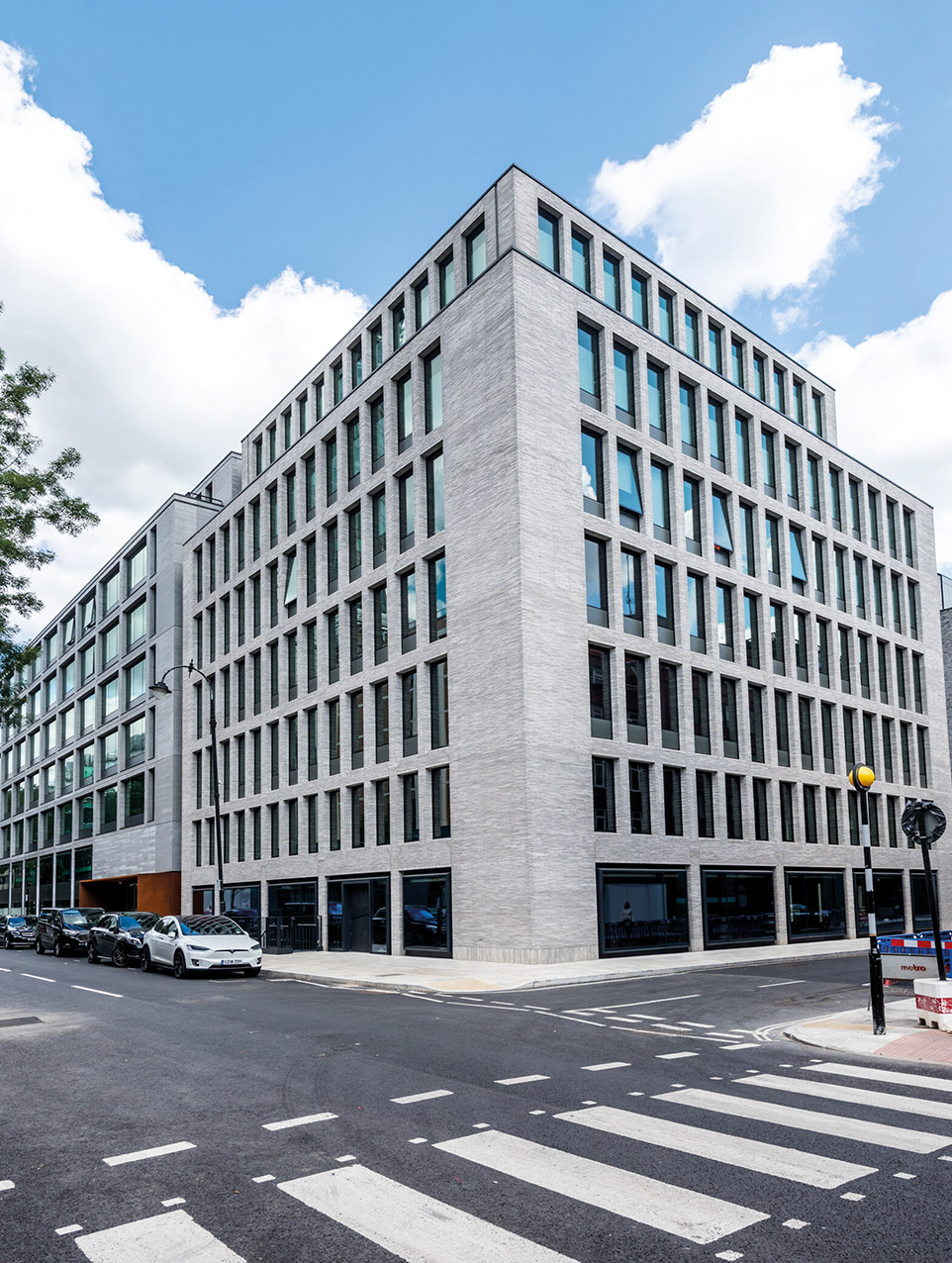
Heat pumps were retrofitted at Arup’s 80 Charlotte Street office
AM17 also offers guidance on some of the less obvious impacts of installing heat pumps in large buildings (see panel, ‘Impacts of heat pumps’).
Engineers eagerly awaiting guidance on this important topic will not have long to wait. AM17 will be freely available this summer from CIBSE at www.cibse.org/knowledge.
- Joshua Bird is a lead building services engineer at Arup
References:
- Heat and Buildings Strategy, BEIS, Oct 2011, bit.ly/CJMay22AM17A
- Phasing out the installation of fossil fuel heating systems in businesses and public buildings off the gas grid, BEIS, Oct 2011, bit.ly/CJMay22AM17B




